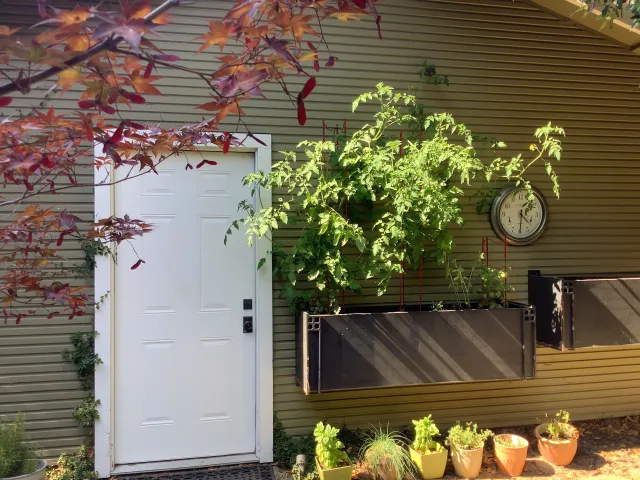Fertilizing plants in July and August is always a tricky experiment here in the Central Valley. During the hottest months of the summer growing season root and foliage growth slows as temperatures rise. Flower bud production also slows and eventually stops. Flowers on plants especially cucumbers, beans and tomatoes drop when temperatures are above 90 degrees. Some flowering species of plants like roses will continue producing flowers during our extremely hot summers but the petals are paper thin and the flowers have no fragrance.
Feeding plants in order to promote new growth when they are in a state of semi-dormancy can actually stress the plants. Fertilization during July and into mid-August when Central Valley temperatures are consistently above 100 degrees should be intended to keep non-productive vegetables, perennials and flowering annuals in overall good health.
The most important principal of summertime fertilization in hot weather is to avoid the application of fertilizers with higher nitrogen levels (above 10 percent N) that promote rapid new green growth or to apply them at half or less the recommended rate listed on the label. Experiment with applying lower-number fertilizers with NPK ratios around 4-6-2. The higher percentage of phosphorus encourages flower production on vegetables and flowering plants; the low nitrogen level will maintain consistent but slower foliage growth. Some heat-loving vegetables like peppers and eggplants continue to set fruit in hot weather. Feed them lightly in July and August. Stop feeding all plants when extended heat spikes with temperatures above 100 degrees for several days are predicted.
Slow-release fertilizers like Osmocote have higher NPK percentages. Osmocote Classic had an NPK of 19-6-12, which is very high, but because the nutrients are released over a 3- to 4-month period of time the effect of the higher nutrient percentages is somewhat mitigated. As an experiment, try to time an application in April of high-nitrogen slow-release fertilizers so that the 3- to 4-month effective period ends in July and then apply again in August.
Monthly side dressing of compost are great all through both the summer and winter growing seasons. Average compost NPK percentages are 1-1-1 and compost is a true slow-release fertilizer as well as a source of beneficial micro-organisms and beneficial fungi. Adding compost also restructures the soil, improving water retention and drainage. The beneficials in fresh, moist home-made compost will still be alive in our summer heat. Scratch a cup or two of compost monthly into the top of the soil around all plants.
It’s also very important to practice crop rotation and avoid planting highly nitrogen-sensitive plants like tomatoes in places where beans and peas have been growing. Beans and peas fix nitrogen into the soil. See the photo below of one 8-foot-tall Black Cherry tomato vine, which continues to grow vigorously up my garage wall. It was all vine with no flower clusters and few leaves at first but luckily a single feeding in early June of a ‘Bloom Buster’ high-phosphorus fertilizer (NPK 10-10-10) improved flower and fruit set, and the addition of fresh homemade compost improved leaf production. A step ladder will help with harvesting.

________________________
Written by UC Master Gardener Elinor Teague.


